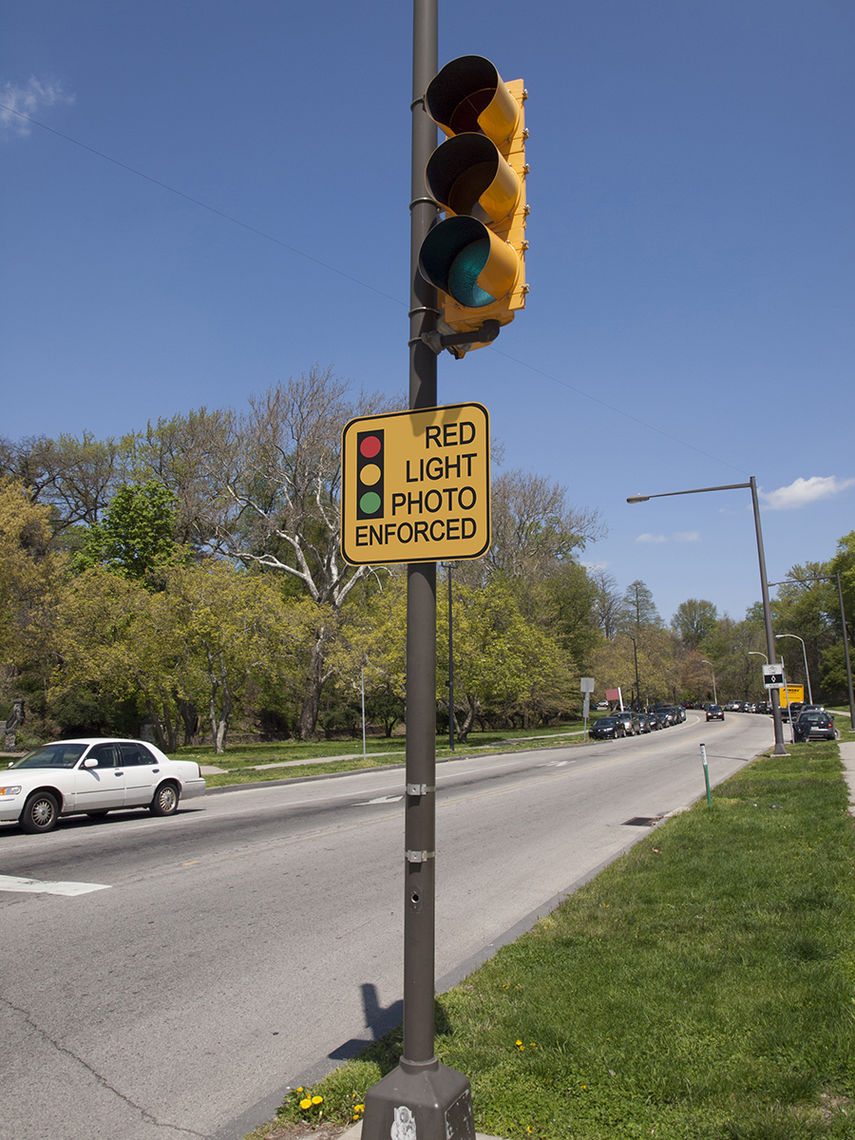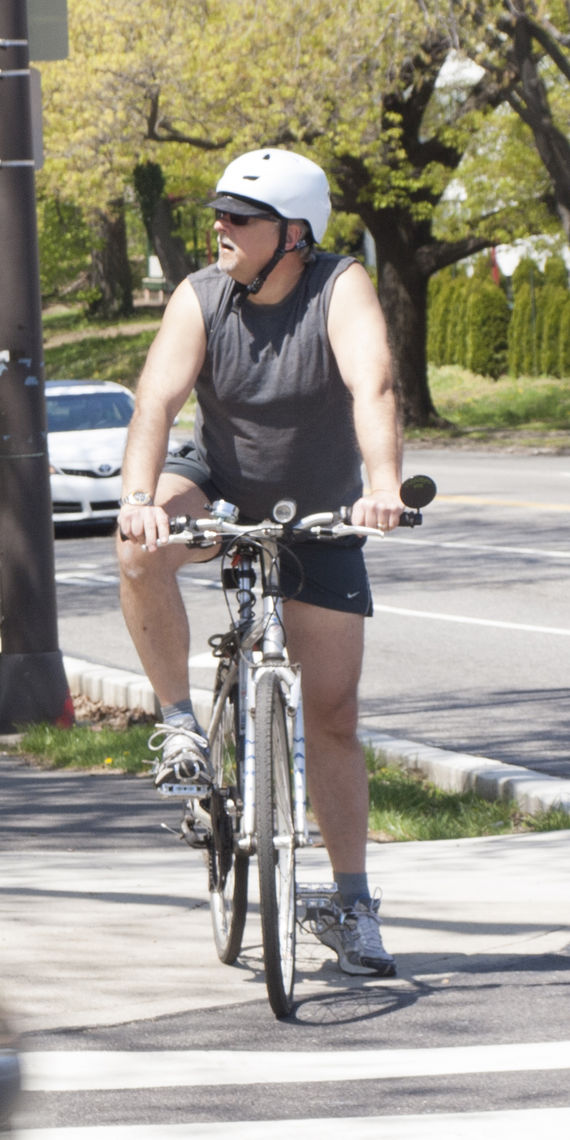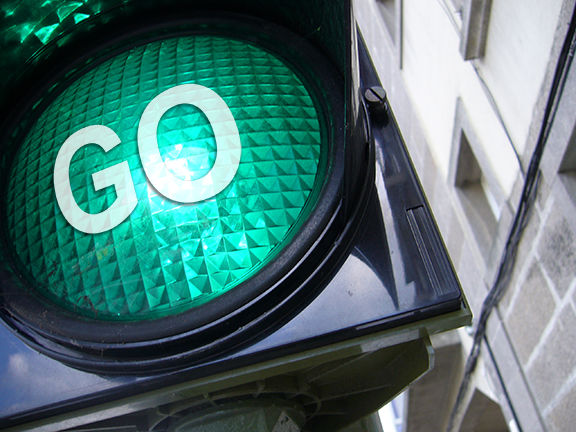Ever wondered why the signal was red when nobody else was there?
Ever traveled down a roadway stopping at red light after red light?
The poorly timed and maintained traffic signals across the United States received a score of “D+” in the latest Traffic Signal Report Card, a study prepared by the National Transportation Operations Coalition (NTOC) in 2012. While this is an improvement over the “D” grade received five years earlier, it still leaves plenty of room for improvement.
There are more than 300,000 traffic signals in the United States, owned and operated by state, county, and local transportation and public works agencies. As with all roadway infrastructure, there is a need to manage, operate, and maintain these traffic signal systems for the traveling public, which requires investment at a time of limited infrastructure funding. Timing traffic signals to meet specific operational objectives, which includes improving flow, reducing the number of times a vehicle has to stop, and therefore, reducing vehicular emissions, is a proven low-cost solution that returns substantial value. The U.S. Department of Transportation’s Intelligent Transportation Systems Joint Program Office maintains a benefit-cost database that documents traffic signal studies conducted by various agencies. According to the database, a program of regular signal timing updates has a benefit-cost ratio between 20:1 and 55:1, with significant estimated annual user savings in the tens of millions of dollars.
Providing this low-cost, high-return signal retiming solution, Urban is working on projects for multiple states, agencies, and municipalities, many using Congestion Mitigation and Air Quality Improvement Program (CMAQ) funding.
Some agencies own thousands of traffic signals, making it difficult to maintain them, or even maintain information on whether or not they are operating efficiently. Information on applying for CMAQ, or other types of funding, is usually available through local planning agencies or metropolitan planning organizations. A summary of available grants and funding options is below.
News Traffic Light

Automated Red Light Enforcement (ARLE):
The ARLE Program awards funds to municipalities for projects that improve safety, enhance mobility, and reduce congestion. Revenue for this program is generated from the fines collected from automated red light enforcement at 21 intersections located in the City of Philadelphia. An eight-member committee selects projects based on effectiveness, cost, local and regional impact, and cost sharing. The grant can be used to fund the entire cost of an eligible project. Matching funds are not required, however, competitive projects do have a cost-sharing element. ARLE is a reimbursement program requiring quarterly submissions for reimbursement. For more information, please review the PA Vehicle Code: PA Vehicle Code – ARLE Law (Act. No.84 of Regular Session 2011-2012), 67 Pa. Code §233.
News Man on Bike

Multimodal:
The Multimodal Transportation Fund, introduced as part of Act 89 of 2013, provides grants to ensure that a safe and reliable system of transportation is available to Commonwealth residents. The program’s goal is to provide financial assistance to improve transportation assets to enhance communities, pedestrian safety, and transit revitalization. Applications are open to municipalities, counties, cities, and boroughs, as well as non-profits, economic development organizations, and transportation management associations. A committee comprised of PennDOT and Metropolitan Planning Organizations (MPO)/Regional Planning Organizations (RPO) staff will make selections. This is a reimbursement program with a 30% local match required. For more information go here.
News Traffic Green Light

Green Light-Go:
The Green Light-Go Program is a new grant program introduced as part of Act 89 of 2013 (the PA Transportation Funding Bill) for designated corridors within the Commonwealth. Also known as “Pennsylvania’s Municipal Signal Partnership Program”, it provides state funds for the operation and maintenance of traffic signals along critical and designated state highways to improve safety and mobility by reducing congestion and improving efficiency. Full details are not yet available (expected fall 2014) for municipalities wishing to apply. According to Act 89, priority will be given to multi-municipal improvements and there will be a 50% match required as part of the program, which can be from municipal or private funding sources. For more information, click here.
Transportation Investment Generating Economic Recovery:
The Transportation Investment Generating Economic Recovery, or TIGER Discretionary Grant Program, is a federal program that invests in road, rail, transit, bicycle and pedestrian, planning, and port projects that promise to achieve critical national objectives for more sustainable transportation solutions. It is a competitive grant program that chooses multi-jurisdictional or multi-modal projects that cannot be funded through traditional DOT funding programs. Applications are accepted on www.grants.gov typically within three months of the notice of funding availability. Since 2009, Congress has dedicated more than $4.1 billion for six rounds to fund projects that have a significant impact on the nation, a region, or a metropolitan area. For more information go here.
News CMAQ Traffic

Congestion Mitigation and Air Quality Improvement (CMAQ) Program:
The CMAQ Program is a federally funded program that was established in 1991 under the Intermodal Surface Transportation Efficiency Act (ISTEA) in response to the passage of the Clean Air Act Amendments of 1990. Under the latest transportation bill, MAP-21, more than $2.2 billion for Fiscal Year 2013 and $2.2 billion for Fiscal Year 2014 have been appropriated for CMAQ. Competitive CMAQ projects propose to reduce emissions and are located in a nonattainment or maintenance area as identified by the EPA. This program was implemented to support surface transportation projects and other related efforts that contribute air quality improvements and provide congestion relief. Previously approved projects includes signal retiming, adaptive traffic signals, transit priority, and diesel engine retrofits. Typically applications are processed by the Metropolitan Planning Organizations (MPO) and Regional Planning Organizations (RPO). For more information, click here.
For more information, please contact Vice President of Traffic Services, Orla H. Pease, PE, PTOE, at ohpease@urbanengineers.com.